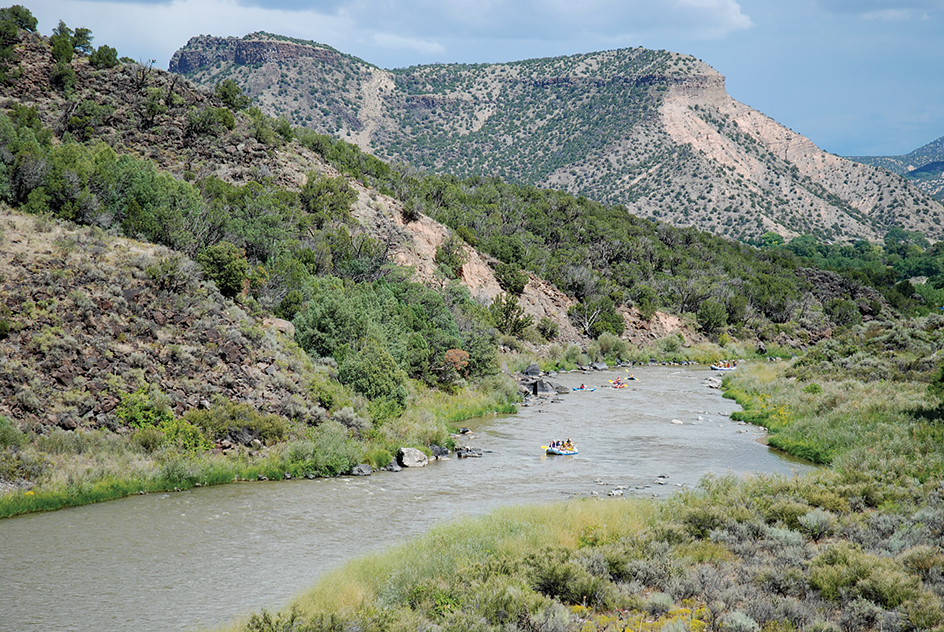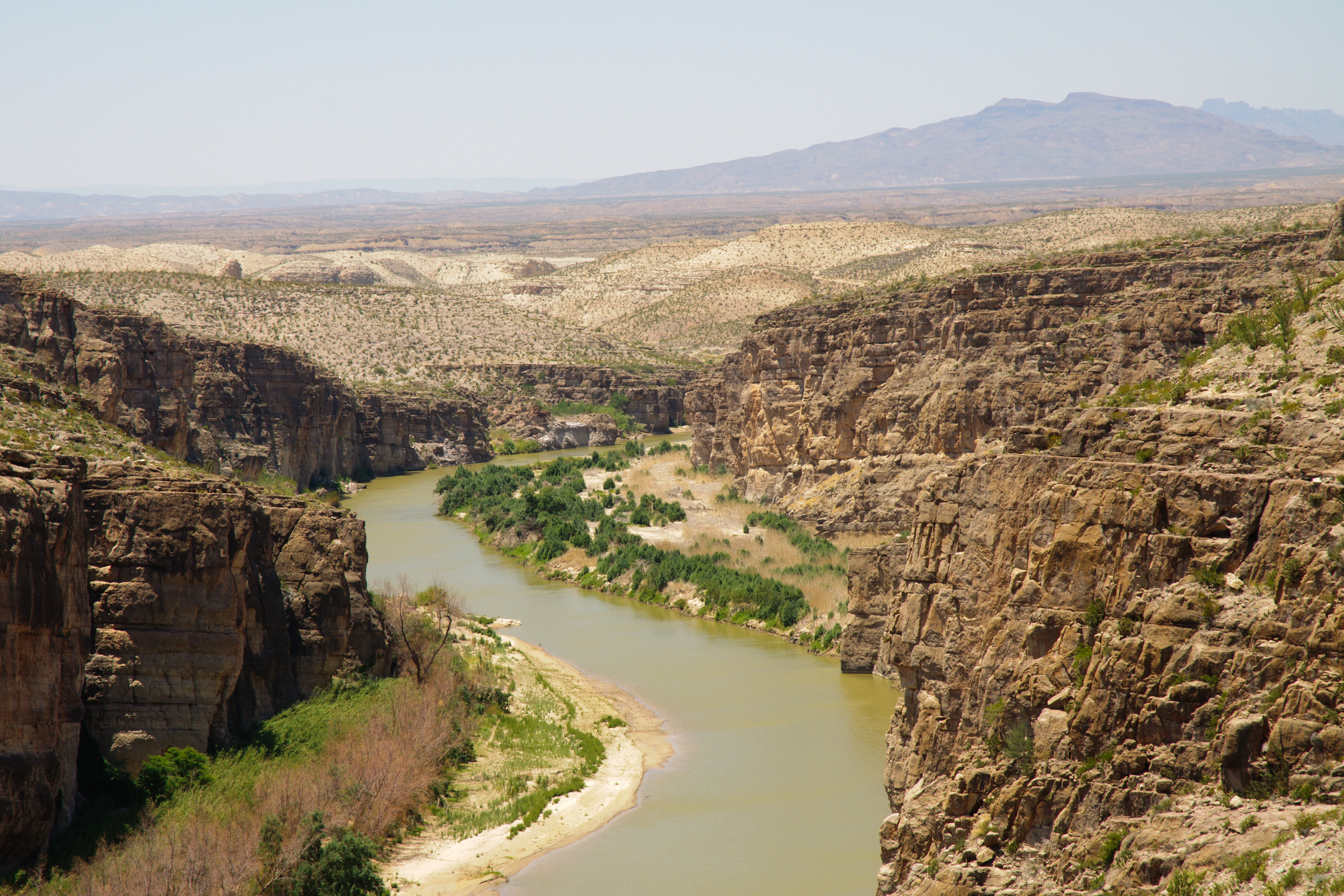Rio Grande, << REE oh GRAND, >> one of the longest rivers in North America, flows for 1,900 miles (3,058 kilometers) through the Southwestern United States. It forms the international boundary between the United States and Mexico for about 1,240 miles (1,996 kilometers), or almost two-thirds of the common border. Early Spanish explorers gave the river its name. Rio Grande means large river. Mexicans call the river Rio Bravo (bold river) or Rio Bravo del Norte (bold river of the north). 
Upper course.
The Rio Grande rises on the Continental Divide in the southern Rocky Mountains in southwestern Colorado. It flows southeast through the San Luis Valley Reclamation Project. At Alamosa, the river turns south. It crosses into New Mexico, and flows from north to south through the center of the state. In northern New Mexico, the Rio Grande, fed by mountain streams, passes through a series of basins separated by narrow valleys. The Rio Grande’s valley widens near Albuquerque, and the river flows out upon a dry plateau to the south. On the plateau, Elephant Butte Dam blocks the Rio Grande and forms the Elephant Butte Reservoir. Farther downstream is the Caballo Reservoir. Both of these reservoirs store water for the Rio Grande Reclamation Project at Las Cruces. The American Dam controls the waters of the Rio Grande north of El Paso at the Texas, New Mexico, and Mexico borders. 
Middle course.
From El Paso to the Gulf of Mexico, the Rio Grande forms the international boundary. The river flows southeast from El Paso. At Presidio, it is joined by the Rio Conchos, an important tributary from Mexico. At Big Bend National Park, the river turns north to pass around the mountainous Big Bend country. It then flows east until the Pecos River joins it. The Rio Grande turns southeast for the rest of its course. Amistad Dam spans the river about 12 miles (19 kilometers) northwest of Del Rio, Tex. The dam forms Amistad Reservoir, which extends upstream 86 miles (138 kilometers). During its middle course, the Rio Grande flows through very dry country. The river may be dry in late summer, because of little rainfall and the amount of water used for irrigation. Railroads cross the border at El Paso and Presidio.

Lower course.
The Rio Grande widens between Eagle Pass and Laredo, both important railroad crossings. About 50 miles (80 kilometers) below Laredo, the Salado River, a major tributary from Mexico, joins the Rio Grande. Falcon Dam, about 20 miles (32 kilometers) below the mouth of the Salado River, forms Falcon Reservoir, which extends upstream more than 35 miles (56 kilometers). El Azucar Reservoir lies across the Rio Grande at Camargo in Mexico. These reservoirs hold back floodwaters for the lower valley’s irrigation projects. Between Rio Grande City and Brownsville, farmers grow citrus fruits, vegetables, and cotton in the irrigated valley.
In 1936, a 17-mile (27-kilometer) canal was built from Brownsville to Laguna Madre, which leads to the Gulf of Mexico. Most of the river is too shallow for boats.
